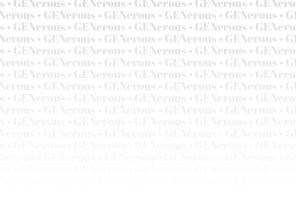Why a nonprofit is helping to level the playing field for access to Jacksonville’s riverfront — a case in point
The name Jessie Ball duPont has long been synonymous with Jacksonville’s rich philanthropic past. In 1927, the duPont family chose Jacksonville as the place to make a 58-acre estate along the St. Johns River their new home, and the importance of placemaking remains at the center Ball duPont’s legacy nearly 95 years later.
Today, as downtown Jacksonville looks toward the future of its St. Johns riverfront, the Jessie Ball duPont Fund is poised to ensure that placemaking will preserve a sense of community and belonging for all Jaxsons for generations to come.
The duPont Fund is leading a collaborative coalition of stakeholders vested in creating a waterfront for all Jacksonville residents. It has created the Riverfront Activation Plan, which incorporates design, development and programming aspects to bring people and energy to the riverbanks of downtown Jacksonville. The idea behind the activation is that, by creating equitable economic development, we have the opportunity to not only improve the quality of life for Jacksonville residents, but also attract new talent and capital to our city.
“We feel that for a community to be as dynamic, welcoming and prosperous as possible, it needs to take a very inclusive and equitable approach,” said Mari Kuraishi, president of the duPont Fund.
When the opportunity came to work with the city to ensure that all Jaxsons’ voices were reflected in what to do on the downtown riverfront, Kuraishi said it felt like a natural fit.
“Placemaking. Equity. Jacksonville. It’s a trifecta.”
Despite primarily being a grant-making organization, investing in Jacksonville placemaking isn’t new for the duPont Fund. In 2013, it took a visionary stake in the future of downtown Jacksonville, purchasing the historic, 126,000-square-foot Hayden Burns Library for $2.2 million. A $25 million renovation followed, preserving the property’s warm history, and melding the building’s past with the future of the 23 local nonprofits that now call the Jessie Ball duPont Center home, now dubbed — The Jessie.
In relation to the riverfront project, place – again – is exactly what makes the area so special. The deep and navigable St. Johns River is one of the reasons Jacksonville exists where it does. It, along with the seaport, is the thing that made Jacksonville commercially relevant.
“It was a working riverfront. It used to be the lifeblood of the city. Making sure that history is integrated into what we do when we activate that space is important,” said Kuraishi.
The duPont Fund, along with the help of project partner Groundwork Jacksonville, gathered public input on exactly what Jaxsons would like to see in that space. They surveyed over 3,000 people, and consulted with around 750 more through water taxi trips and twilight riverfront walks. Several hundred more offered opinions and questions through virtual public Zoom meetings.
Responders indicated they want to interact with the river primarily through equipment rentals and watercraft launch areas. Fishing, watersports and floating concerts also topped the list. Along the riverfront walks, exercise and open green spaces were most important, followed by specialized areas for festivals, relaxation, playgrounds and art installations.
Kay Ehas, CEO of Groundwork Jacksonville, said community-focused development would bring “multiple benefits” to the areas that surround the downtown sector. Protecting public access and creating park spaces would help bolster the resilience and revitalization of the nearby neighborhoods, as well as increase prosperity for long-term residents.
“Doing public space really well brings about economic development,” said Ehas.
From the benchmarking study duPont conducted, there is great truth to that statement. In Pittsburgh, $130 million in public investment spurred a whopping $2.6 billion in development for the city. In Denver, outdoor recreation spaces helped residents get healthier, saving $65 million in medical costs. Greater activation of the Jacksonville waterfront could catalyze new development and foster a more attractive environment for skilled workers.
“This is a really important time. Jax is experiencing a real influx of people, partly pandemic-related, and partly because this town has potential. As people come in, that represents talent flowing into the city. If talent comes and stays, capital will follow. Companies will come because there is a young, talented workforce in the city,” said Kuraishi.
Nancy Powell, executive director of Scenic Jacksonville and chair of Riverfront Parks Now, which contributed to the benchmarking study, echoed Kuraishi’s sentiments.
“If you build it, they will come. If you create experiences, people want to have those experiences. And what better place to have them than on the riverfront,” said Powell.
The Jessie Ball duPont Fund has put together quite the team to conceptually build this riverfront of dreams. In addition to project partners from Jacksonville and New York, dozens of individuals and organizations have joined the activation coalition, providing program ideas and collaborations; the taskforce, providing financial, political and execution input; and NextGen, which is comprised of younger members helping future-proof the spaces. Implementation is going to require a lot of actors working together, and the duPont fund has a plan to safeguard the decisions made today against the changes of tomorrow.
Kuraishi said that, while administrations come and go, and the needs of the community change, there is a way to ensure consistency across time – touch as many people as possible.
“We’ve reached out to all the city council members, the [Jacksonville] Chamber [of Commerce], civic groups, all the different city departments…as many people as possible,” said Kuraishi. “We came up with 10 principles to take into account when looking at and evaluating possible public uses for the riverfront. We would like those 10 principles to be used not just for government agencies when assessing bids, but for citizens to say, ‘Hey, we want to make sure that this space is fun and functional.’”
The public input is what sets this activation proposal apart from other development, which could be strictly economic-based. By bringing together area nonprofits in the planning process, the duPont Fund is changing the way city planning is viewed, and possibly even addressed in the future.
“Public input is so in flux that some public sector entities may find that the way they are prescribed to get public input may not be as suited to the time and way people interact today. The additional flexibility that philanthropy and the nonprofit sector bring is a really good complement,” explained Kuraishi.
The activation plan features flexible spaces for activity, exercise, retail and gathering — designed to create both visual appeal and resiliency. The design will not dictate what will happen downtown, but inspire people to use spaces in new, creative ways. A yoga studio could host a riverfront sunrise class, a nonprofit could bring a large fundraising concert, or a startup baker could rent a space to share their delights with the community. By involving the needs and wants of the community, the duPont Fund and their team are designing a downtown where all members of the community can feel they truly belong.
The spaces are also designed to integrate into existing features of the downtown urbanscape, features like the Emerald Trail – a planned, 30-mile series of trials, greenways and parks that encircle Jacksonville’s urban core.
“The [Emerald] Trail connects to the riverfront in three locations, so we’d love to see spaces for all people to enjoy when they get there,” said Ehas.
Kuraishi explained that talking to the community, the continuous process of back-and-forth, is a really important call-and-response that needs to continue to ensure the elements of the downtown activation plan result in success.
“We want the sum to be more than its parts. We can integrate it and turn it into the cultural spine of the city,” said Kuraishi.
The top ten guiding principles
John C. Maxwell famously said “Change is inevitable. Growth is optional.” So, as the Jessie Ball duPont Foundation embarked on its riverfront activation plan, they hoped to guarantee that generations of Jacksonville residents would still want to enjoy the downtown riverfront despite inevitable changes that would come with time. Changes in leadership. Changes in priorities. Changes in downtown residents’ needs. How do you snapshot a community’s desires at a particular moment in time, and still safeguard it for the future? Their answer was found through a massive amount of public input, framed by 10 guiding principles. According to the organization, they hope that these principles become a resource not only for elected officials and city departments, but also for citizens as they use their voices to help shape the future of the riverfront.
1. Accessible
Welcoming and accessible to all — ensure the space is accessible to people of all abilities, with programming and spaces that represent diverse groups, cultures and backgrounds.
2. Diversity
Diversity of audience and experience — use spaces that speak to diverse demographics and use them to bridge the gaps and reinforce a sense of community.
3. Flexibility
Flexibility — incorporate different spaces that can be used creatively for formal, informal, small, medium or large activities.
4. Fun & Functional
Fun and functional — bring the community together with fun and functional activities, and convenient ways to access everyday needs like food and errands.
5. Wellness
Promoting wellness — connect residents to opportunities for exercise, relaxation, recreation and play.
6. Ecology
Ecology — build off the region’s native ecology and habitats and build resiliency against storms and rising sea levels.
7. Connectivity
Multiple connected paths — connect the entire waterfront experience while differentiating activity zones and encouraging exploration.
8. Traffic
Framed view corridors — encourage traffic influx from nearby neighborhoods through intriguing street views and waterfront activities.
9. Variety
Variety — design the space to be dynamic throughout the day and the seasons through use of diverse art, lighting, programs and features.
10. Streets
Great streets — enhance and beautify the streets with paving, planting and safe public spaces.





